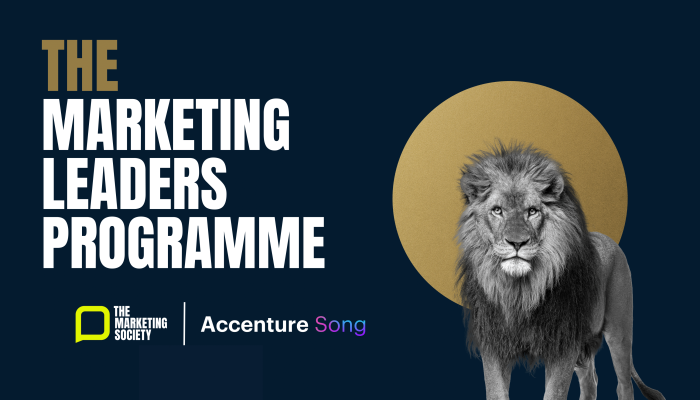Millions of hearts around the world beat with the help of a pacemaker. Candles are lit with the help of safety matches. Ball bearings make our machines work smoothly, whilst we instantly recognise Samuelson’s iconic Coke bottle design. We depend on Bluetooth to connect our devices, and innumerable lives have been saved with the help of the three-point seatbelt …
Just a few Swedish inventions.
Billions of home are furnished with IKEA designs. Millennials flock to buy the latest designer collaborations in H&M. Skype has become a key player in the communications world, Skanska makes the world’s most eco-friendly buildings, and TetraPak is responsible for the shape of the drinks cartons on our table. We ask ourself, why pay for iTunes when we could stream with Spotify, whilst becoming addicted to games like Candy Crush and Minecraft.
All Swedish innovations.
Of course, we all know the story of IKEA … It began in 1931, when five-year-old Ingvar Kamprad started selling matches to his neighbours, for a profit. Just twelve years later, he founded a company that he decided to call IKEA, based on his own initials plus the first letters of Elmtaryd and Agunnaryd, the farm and village where he grew up. Six decades later, the company had developed from an entrepreneurial idea in the woods of southern Sweden to a major furniture retail brand present in 48 countries around the world. IKEA has even just launched veggie meatballs for your mid-store snack, brilliant!
Today, both the EU and WEF rank Sweden as Europe’s leading country for innovation. Reasons for this include a historic tradition of inventors, a commitment to gender equality, and a strong belief in the individual. Close collaboration between research institutes and the private and public sectors is another key factor, setting the foundation for global Swedish companies like AstraZeneca, Ericsson, and Volvo.
Innovation is closely linked to research and development. Sweden is one of Europe’s top three spenders in this area, investing 3.6 per cent of GDP in R&D in 2009. Compare this with the EU-wide target of 3 per cent GDP investment by 2020, and it’s clear that Sweden is ahead of the game.
What next?
This week I’m in Sweden to explore the next generation of Swedish innovation, those who continue to shake up markets today. Here are just a few of the contenders for Gamechangers Sweden. Some are big whilst others are small, some well known whilst others slightly off-beat. All are inspiring, and offer ideas which we can all learn from.
1. Electrolux … shaping the future of home design
While people instantly recognise the name Electrolux on their kitchen appliances, many may not know that this Swedish company is the world’s second largest home appliances manufacturer. Started in 1919, the company originally sold Lux vacuum cleaners, and later added refrigerators, washing machines, dishwashers and a variety of other appliances to its product line. So where next? The Electrolux Ideas Lab global competition to find the best new ideas for innovative application, encouraging innovators but also its own design thinking, collaborations, responsible innovation, and future growth.
2. H&M … minimalist fashion across the world
Bringing Sweden’s quintessential minimalist yet chic style of fashion to the world is Hennes and Mauritz, now simply H&M. Started in 1947 as a women’s clothing store called Hennes in Västerås, founder Erling Persson later bought hunting and fishing equipment store Mauritz Widforss, officially changed its name to Hennes & Mauritz, and added men’s and children’s clothing in 1968. Since then, H&M has expanded to over 2,500 stores around the world selling trendy clothes and accessories at affordable prices. To stay fresh and topical, H&M continue to lead the way in in retail collaborations with rockstars and designers.
3. Hövding Bike Helmet … the first “invisible” airbag for bikers
Hövding started out in 2005 as a master’s thesis by Anna Haupt and Terese Alstin. The idea of developing a new type of cycle helmet was a response to the introduction of a law on mandatory helmet use for children up to the age of 15 in Sweden, which triggered a debate on whether cycle helmets should be mandatory for adults too. Why did they not wear them, they investigated? Because it gave you bad hair! They about developing a pop-up helmet, like a car airbag, but for most of the time not ruining your hair.
4. Micro IP … shrinking the internet protocol
Tiny gadgets such as car keys and credit cards can now communicate with one another, thanks to an interface called uIP, or micro IP. By shrinking the internet protocol he was able to simplify the ability to make connections between very small devices, enabling the “internet of things” to work. Scientist Adam Dunkers is recognised by the US university MIT’s Technology Review as one of the top 35 young inventors in the world, and is the man behind the software that makes this interface possible.
5. Peepoople … the single use toilet “in a bag”
Swedish company Peepoople is combatting one of the world’s biggest problems, sanitation, with its ingeniously named Peepoo toilet. The United Nations says roughly 2.6 billion people lack access to basic sanitation. Peepoo is a self-sanitising single-use and fully biodegradable portable toilet in the form of a bag. Once used, Peepoo remains odour-free for 24 hours, kills bacteria and viruses within two to four weeks, breaks down into carbon dioxide, water and biomass, and can be turned into fertiliser for growing crops.
6. Sensus Guitar … the complete rock concert in your hands
Dubbed the world’s first ‘smart guitar’, this instrument uses buttons and motion sensors as well as traditional strings to create a range of different sounds including drum beats and echo effects. All sounds and modulations can be obtained without the help of any accessory or computer. You can connect the guitar to the internet and link up with social networks, allowing you to create and perform virtual concerts that can be seen all over the world.
7. Solvatten … portable water treatment
A child dies every 15 seconds as a result of contaminated water, according to UK-based charity WaterAid. Solvatten’s pioneering portable water treatment unit allows households to heat up and treat contaminated water using solar energy. Sold and distributed as 11-litre containers, the Solvatten unit is placed in the sun for two to six hours to sterilise the water, which can then be used for drinking, cooking and other daily hygiene-related tasks.
8. Spotify … streaming music that challenged the industry
Spotify grew out of deviant behaviour – imitating the actions of illegal downloaders to find a legal business model which combines free access with the ability to also make money as a business, and for artists and publishers. The brand is contagious, driven by consumer collaboration, and staying topical. Much of Spotify’s success is due to increasingly sophisticated data collection, which allows it to keep releasing new products that captivate its users around a particular mood or moment in time rather than offering the same tired genres.
9. Swish … mobile payment making Sweden the world’s most cashless society
Swedes mainly use debit cards (PIN usually required, unlike in many countries) and our new favourite mobile payment app, Swish. So many people are ‘swishing’ now that the app is credited for the reduction of cash circulating in Sweden, according to a study by KTH Royal Institute of Technology.
10. Volumental Body Scanning … everything personalised to you
You know that feeling when you go shopping, find the perfect pair of shoes in just your size…and then try them on and they don’t fit? Swedish firm Volumental, one of the world’s leading scanner companies has created a 3D machine that scans different parts of your body to create clothing that is perfect for your shape. So in the future you could find yourself wearing not only custom-made shoes but also sunglasses and even headphones.
Why Sweden?
Each year, Harvard Business School compiles the National Innovation Capacity Index, a study of different countries’ innovation potential. In 2010, Sweden was ranked eighth among 173 countries. In terms of the number of trained engineers per capita, Sweden was ranked second, close behind Japan. The study also notes that in the past 15 years, Sweden has had the second-fastest growth rate in the number of patents per capita.vYou can read the study in its entirety here.
INSEAD Business School’s Global Innovation Index ranks Sweden in second place once again. The index measures the degree to which countries have an infrastructure that enhances a creative environment and allows for innovation, as well as actual output. Sweden has strengths in terms of both output and input. Strong output is demonstrated in many new published research and technical papers, and many registered patents. Sweden is also seen to have a good input basis, with a stable political climate and relevant, high-quality education.
Biotech priority
The Swedish government has chosen to focus strategic investments on three key areas: medicine and bioscience, technology, and climate.
Sweden is particularly strong in biotechnology. Pharmaceuticals are a key export, and Swedish medical innovations include the asthma medicines Bricanyl and Pulmicort; the growth hormone Genotropin; and the stomach ulcer drug Losec, one of the world’s best-selling drugs.
Research is not confined to giants such as AstraZeneca and Pfizer-Pharmacia; many small biotechnology companies conduct their own research. A key area of interest is healthcare. Rapidly growing markets include medical devices such as imaging equipment, orthopaedic implants, dialysis equipment, heart-lung machines, and ECG equipment, as well as laboratory studies of medicines.
Microelectronics is another growth market. Sweden is at the forefront of research into silicon-based components, high-speed electronics, organic electronics, photonics and systems design.
Development partners
In order to encourage young people’s interest in technology and entrepreneurship, Swedish schools are working with a variety of organisations. Here are three examples:
- Finn upp combines an inventing-based teaching method for schools, and Sweden’s largest inventors’ competition for young people in grades 6-9. Held every three years, the competition aims to stimulate the power of young ideas and inspire a new generation of inventors, innovators and entrepreneurs. Finn upp was founded in 1979 by the engineering interest group Ingenjörsamfundet.
- The non-profit organisation Ung Företagsamhet (‘young entrepreneurship’) works in partnership with Swedish schools. Older students, aged 16-20, have the opportunity to run their own company during the school year as part of their upper secondary (high school) studies. A 2010 survey shows that 8 out of 10 participants felt they learned about running a business. They also indicated that they had developed more self-confidence and a greater ability to take decisions, solve problems, and work with others.
- The non-profit association Snilleblixtarna (‘flashes of genius’) is geared to schoolchildren from preschool to fifth grade. The goal is to encourage children’s interest in technology, the natural sciences and entrepreneurship. Snilleblixtarna provides teachers and educators with tools and a working model to stimulate children’s curiosity, desire to learn and ability to think critically.
There is an extensive network of organisations and companies, in the public and private sectors, working with academic bodies in Sweden. They aim to develop new products, services and processes that will make long-term contributions to sustainable growth. To name just a few:
- The Knowledge Foundation (KK-stiftelsen) aims to stimulate competitiveness by creating conditions for innovation and creativity, and by strength-ening the links between academia and industry.
- The Swedish Foundation for Strategic Research (SSF) is an independent organisation that supports research in the natural sciences, engineering and medicine.
- The Swedish Governmental Agency for Innovation Systems (Vinnova) focuses on innovations linked to research and development; particularly information and communication technology (ICT), biotechnology, working life, materials, transportation and bringing products to production.
- The Swedish Agency for Economic and Regional Growth (Tillväxtverket) is a government body that aims to foster greater enterprise growth and sustainable, competitive business and industry throughout Sweden.
This piece by Peter Fisk first appeared here.



